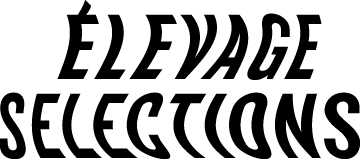Chateau Merande
Savoie, France
Brothers Andre (formerly a teacher) and Daniel (formerly a nurse) Genoux along with their good friend Yann Pernoult (a lifelong vigneron) took over their family winery in the late 1990s after leaving their careers for a life in wine. The 6th generation of Genouxs to grow wine they had, by the early 2000s, converted everything to organic farming and replanted and relandscaped many of the incredibly steep vineyards. Today they farm biodynamically and follow the moon phases and the cosmos quite carefully in both their work and their lives. They plow with draft horses and have a flock of sheep for green work. They farm 12 hectares of vines in total, most of which are over 50 years old.
Château Mérande is located in Arbin, an area most famous for Mondeuse. Arbin is located on dramatically steep slopes above the Isère River. In addition, they farm the other main indigenous grapes of the region: Roussanne (from the esteemed Chignin area) and Roussette de Savoie, also known as Altesse.
The wines are made naturally, with no sulfur during vinification (only some at bottling), very long, slow natural fermentations and no chemical additions. Vinification is done in a combination of old barrels, cement eggs and stainless steel. Whites are whole cluster pressed and see extremely long, gentle press cycles (sometimes 12 hours), reds are partially destemmed and see very short macerations. All of the vineyard work is done by hand including harvest. Wine are aged on their lees until bottling.
The region: The eastern French alpine region of Savoie remains somewhat obscure due to its highly mountainous area with little land for viticulture, and the ski tourists who come year-round to drink up all its wine. For much of its history Savoie was an independent Duchy but in 1860 Savoie and Nice became part of France, and the Dukes of Savoie then became the Kings of Italy. It is a shorter drive to Piedmont than to the Rhone valley from most of the region. It includes the eastern part of the Rhône-Alpes department in France, and borders both Switzerland and Valle d'Aosta in Italy. The region was recognized as an AOC in 1973, one of the last in France of its major wine regions.
The vineyards themselves can be split into three main areas: those in the North-East by Lake Geneva, those in the North-West near the Rhône, and those in the South, in the Combe de Savoie and the Cluse de Chambéry. All of the vines in Savoie are planted between 200 - 500 metres. Snow is not a major problem in the vineyards as it rarely settles for long below 500m. These same steep slopes also help protect the vines from strong winds and increase their exposure to the sun. The winters are of course cold, but summers can be very hot though the climate is still considered continental, with heavy rainfall. Because most of the vines are on slopes, they drain the water, though the humidity results in intense fungal pressure making organic farming very difficult.
Aprement 1248
Jacquere from vines first planted in 1919 on the limestone face of Mt Ganier. Grapes are whole cluster pressed in a very long press cycle and fermented naturally at low temperatures. This cuvée takes its name from the disaster of 1248 when a massive landslide decimated part of the region. The landslide took out 7 kilometers, buried 5 villages and killed over 1000 people. The collapse left a cliff face almost 900 m high, and entirely remodelled the valley beneath.
Son Altesse
Altesse/Roussette de Savoie from a mixture of young and old vines over clay-limestone soils with glacial till. Altesse suffers greatly from fungal issues and is a challenge to make naturally. Thus, it must be severely sorted in the vineyard. Soft and long press in whole bunches. Natural fermentation at low temperatures for 6 to 8 weeks.
Le Grande Blanc
Roussane from a very stony clay-limestone vineyard. This is from a later pick of Roussane for a more textured, deeper expression. Soft and long press in whole bunches. Natural fermentation at low temperatures for 6 to 8 weeks.
La Belle Romaine ($34.40)
Mondeuse from 50+ year old vines on Kimmeridgian limestone and glacial till. Half of the fruit is destemmed, the other half is left whole cluster and macerated together for 10 days. This is more of an infusion, done without pump overs, only gentle treatment to keep the cap wet.
Retail
Calabria Market
Kenaston Wine Market
Boutique del Vino
